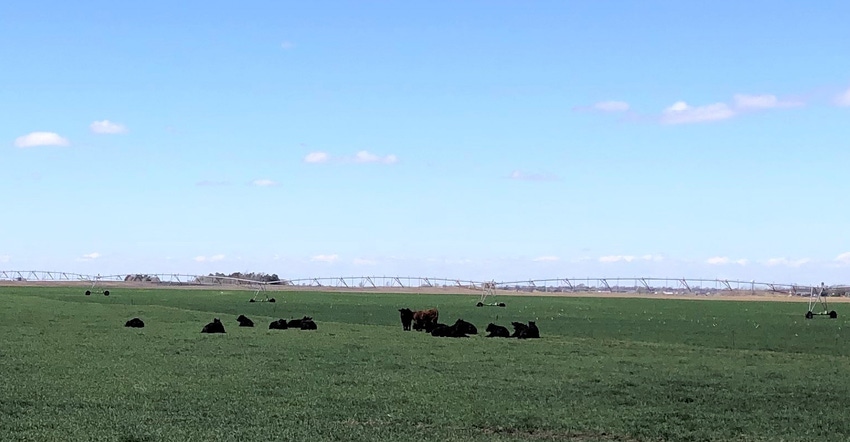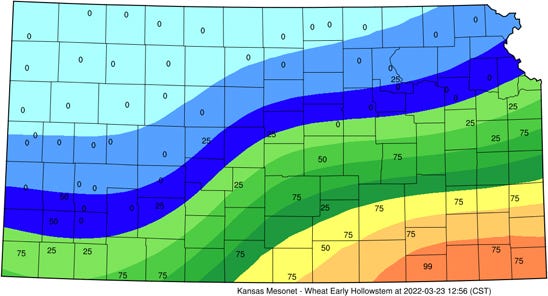
Dual-purpose wheat is a popular tool for farmers and cattle producers to make the most out of a winter wheat crop. But the key is to pull grazing cattle out of that wheat at the first hollow stem growth stage, so that the grain development isn’t damaged.
This spring, the Kansas Mesonet introduced a new tool to help cattle producers and wheat farmers better determine that timing with the Wheat First Hollow Stem tool.
According to Kansas Mesonet, the page tracks the soil temperature at its various stations around the state, and uses that to calculate the wheat growing degree days (GDD) and the path to the first hollow stem occurrence. It tells farmers and cattle producers the probability of first hollow stem occurrence historically and currently for both early- and late-maturing wheat varieties.

It builds off of a wheat growth model that was developed by Oklahoma State University and the Oklahoma Mesonet, according to the announcement in the March 18 Agronomy eUpdate. That OSU model used wheat growing conditions tracked in south-central Kansas in the 2016 to 2021 growing seasons.
Dual-purpose wheat
Winter wheat has long been an ideal forage for grazing stocker cattle in the Plains. It’s a way to use the tender, green wheat growth to put on pounds on young cattle before they head to the feedyard.
Some growers will graze out their wheat acres, not intending to have a secondary grain crop. The cutoff point for grazers and farmers is the wheat first hollow stem stage, when there is about a dime’s diameter of hollow stem below the developing grain head in the wheat plant. If that developing grain head is grazed off by cattle, the plant will not produce grain.
New tool
The new tool on the Kansas Mesonet will help farmers:
Estimate probability of FHS across the state. Users can change the maps to select either “Early probability” or “late probability,” depending on the maturity of their planted wheat variety — and then can see how that compares at locations around the state.
Compare previous years. Users can use the chart tab to see the current year’s data to recent years and the five-year average for each Mesonet location.
Statewide stats. The table on the tool lets users view and sort data from around the state and download it to perform their own analysis via the Download tab.
Graphics. Users can even download maps in .png format to share with their farming and grazing partners, or on social media.
Find the new Wheat First Hollow Stem Probability tool at bit.ly/mesonetwfhsprob. Learn more at bit.ly/newfhstoolarticle.
Kansas State University Agronomy eUpdate contributed to this article.
About the Author(s)
You May Also Like






